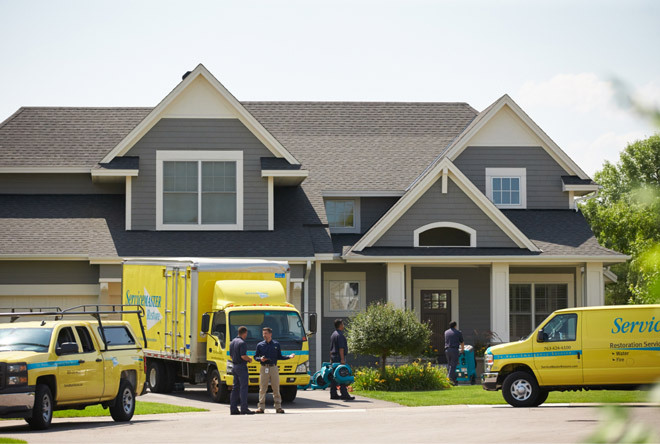Ice Dams
Ice dams occur when winter weather – such as snow and ice – causes a buildup of ice on the edge of your roof. The water on the outside edge of the roof freezes, whereas the water that is directly over your heated home melts. This creates an “ice dam” of sorts since the melted water is caught behind the frozen water. Not only does this put unwanted pressure on your roof, but it also increases the susceptibility of your home to have water damage. This is because the melted water behind the ice dam has a tendency to damage roof shingles and leak into your home.
With that said, what does this mean for people who have to endure East Coast winters? Indeed, it is important to have a plan for such water damage, which is where ServiceMaster South Shore comes in.
We are here to help repair and restore your home from ice dam damage. Here are some helpful tips to help prepare your home for winter weather:
- Be sure your attic is dehumidified and properly insulated – this will prevent from moisture in the air melting water on the roof.
- Seal any cracks or damages in your attic or roof.
- Properly ventilate your attic.
- Keep your gutters clean during the winter – this will prevent water from overflowing if an ice dam forms on your roof.
Keeping your attic insulated and ventilated is often the most effective ice-dam prevention measure. In the event that you need professional advice about any water damage issue – including ice dams – ServiceMaster South Shore is here 24/7 to evaluate your home and provide a long-term solution. Call today: (781) 536-7375

.png)
